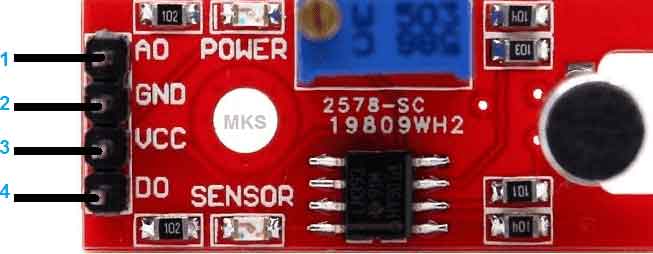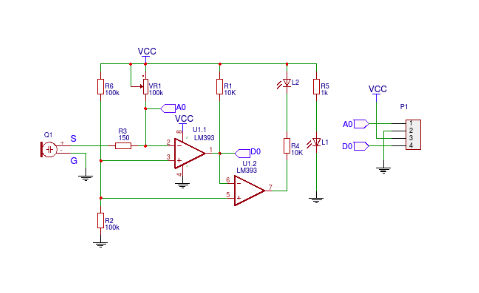Microphone Sound Sensor
A microphone is an acoustic to electric transducer or sensor that detects sound signals and converts them into an electrical signal. This guide shows the way to use the microphone sound sensor with the Arduino. The microphone sound sensor, because the name says, detects sound. It gives a measurement of how loud a sound is. there’s a good sort of these sensors. within the figure below you’ll see the foremost common ones used with the Arduino.
The compactor ic sensor modules have a built-in potentiometer to regulate the sensitivity of the digital output pins.
High-sensitivity sound detection module with 2 outputs.
- AO = Analog output, the real-time output voltage signal of the microphone.
- DO = The digital output depends on the sound intensity and the threshold that has been set.
SPECIFICATIONS:
1. Voltage……………..3.3-5 VDC
2. Outputs……………..one analog + one digital output
3. Fixation…………….1 x mounting screw hole (3 mm)
4. 2 indicator LEDs……..1 power indicator + 1 comparator output indicator
5. Frequency response……50 Hz – 20 kHz
6. Impedance …………..2.2 kΩ
7. Sensitivity …………48-66 dB
8. Operating temperature..-40 °C to +85 °C
9. Dimensions ………….44 x 15 x 10 mm
10. Weight………………4 g.
| SENSOR MODULE PIN | ARDUINO CONNECTION |
| Ao | Any Analog pin of Arduino |
| Do | Any digital pin of Arduino |
| GND | The ground of Arduino Board |
| Vcc | 5V DC |
APPLICATIONS:
The following are the list of applications of microphones:
1. Hearing aids.
2. Telephones.
3. Tape recorders and karaoke.
4. Live and recorded audio engineering.
5. Radio and television broadcasting.
6. Speech recognition technology.
Read more Microcontroller Sensors
- Ultrasonic Distance Sensor
- IR Sensor
- Passive Infrared Sensor PIR
- Soil Hygrometer Detection Sensor
- Light Detection Resistor Sensor LDR
- Thermal Sensor
- Rotary Encoder Sensor
- Gas Sensor
- Force Sensor
- Humidity Rain Detection Sensor
- Accelerometer Sensor
- Temperature Humidity Sensor
- RF Transmitter Receiver
- Barometric Pressure Sensor

